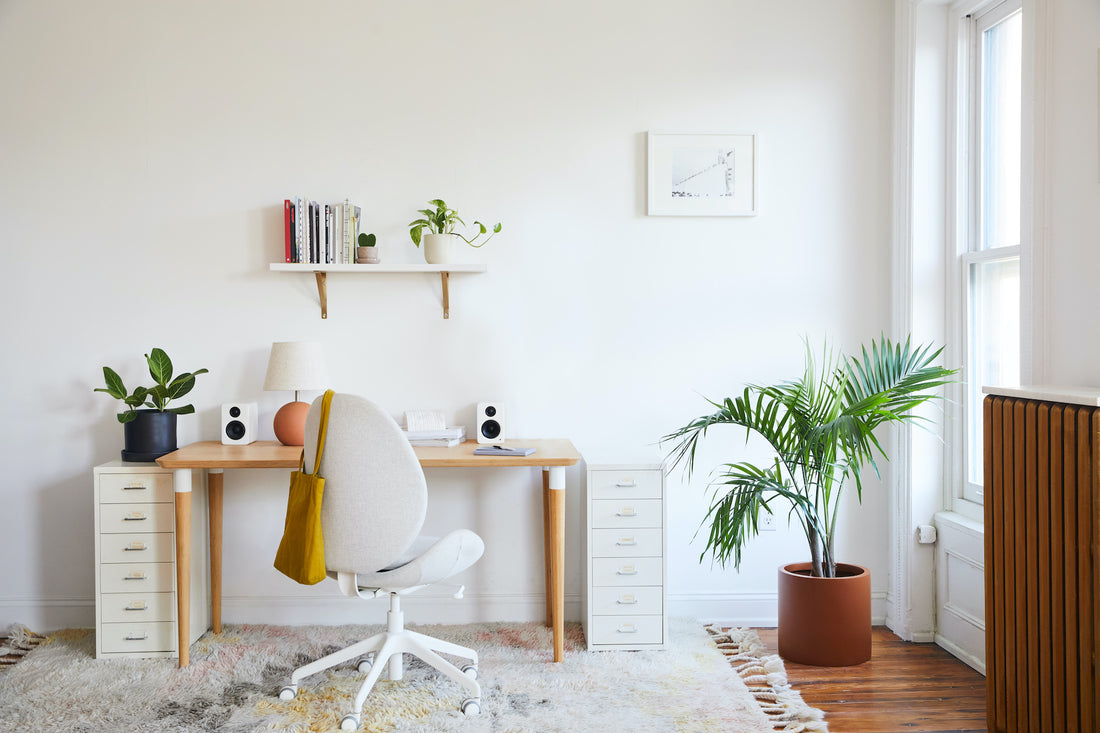
Plants 101
Fall Plant Care Tips For Houseplants
As the seasons change, so too do your plant’s needs. Indoor plants are affected by outdoor changes. In this article, we’re talking about all things fall and how you should care for your plants when the temperatures cool down and the days shorten.

As the seasons change, so too do your plant’s needs. Indoor plants are affected by outdoor changes. In this article, we’re talking about all things fall and how you should care for your plants when the temperatures cool down and the days shorten.
The weather changes in fall can be dramatic from day to night. If you’re reaching for moisturizer and an extra layer, you can bet your plant needs a little extra care too. Modifying light, waterings, and bringing plants indoors will make the transition in a transitional season as smooth as possible.
Bring Houseplants Indoors
If you moved any of your plants outside for the summer, it’s about time to bring them back indoors. You’ll want to move houseplants back inside before temperatures dips below 55°F (12.5°C) at night. Before the move, check your plants for pests they might have picked up outside. If you have a garden hose, give them a thorough shower and once dry, spray their leaves with diluted neem oil or similar. If a plant didn’t exactly survive the season, it’s OK to let go. There are plenty of other plants to check out.
Keep Light Levels Up
Pay close attention to the light your plants are getting. In fall, the days are shorter and the angle of the sun is changing. Some of your indoor plants might need to sit in a new place to get the same amount of sunlight they did spring and summer. You might want to group your succulents together on the windowsill rather than on your coffee table for example. Rotating your plants once a week helps to ensure all sides are covered and your plant won’t lean one way or another.
If you home is lacking in natural sunlight, don’t worry: you can always add a grow light to keep your plants thriving no matter the season.
Water Less Often
You’ll find yourself needing to water less often as the days get shorter. Your houseplants are getting less light and growing more slowly. Some may even go dormant come winter. For example, a Snake Plant might need to be watered every 6 weeks in the fall, compared to every 3 weeks in the summer. Always check the potting mix to make sure it’s completely dry before watering.
Increase the Humidity
The air indoors is going to be much drier, so if you’re watering less, you might want to invest in a humidifier to increase the humidity levels. Many common houseplants are tropical plants that prefer a humid environment. Plus, humidifiers are great for the air we breathe and good for our skin too. You can also group like-plants together to increase humidity.
Avoid any extreme changes in temperature—don’t put your plants near or on top of the radiator, or in places there might be a cold draft, like next to a front door. Sudden hot and cold drafts can stress plants out. They prefer a stable environment.
Forgo Fertilizer
Foliage growth slows down considerably during the fall and winter months, so you can withhold from using any fertilizer until next spring, the start of the growth season. Give your houseplants the essentials—light and water—to sustain them through winter, but don’t fuss over them or you might kill them with kindness.
Foliage Dieback
When bringing houseplants from the great outdoors back to your living room—or bedroom or bathroom or kitchen—they may begin to drop their leaves. This is perfectly normal, as they are adjusting to the lower light levels of being indoors. Don’t fret! Even if your plants stayed inside all summer, this can happen. Less light equals less energy to sustain all their foliage. You can give your plants a hand by pulling off a few mature leaves that seem to be on their way out.
Call to Repot
Did your plants grow in the spring and summer? Chances are, they did. If your plants need more space, now is a good time to repot them in to slightly larger planters. For how-to repot your plant properly, check out our repotting guide.
Get Creative
Fall is a great time to tap your inner interior designer. Always dreamed of installing floating shelves, hanging baskets, or ceiling hooks? Now is the time. Just make sure your DIY project can hold your houseplant after a thorough watering, or opt for an already designed option instead.

Words By The Sill
Empowering all people to be plant people—a collection of articles from The Sill's team of plant experts across a variety of plant care topics to inspire confidence in the next generation of plant parents. Welcome to Plant Parenthood™.
Do Some Plant Shopping